
Robert Hooke FRS was an English polymath active as a scientist and architect, who, using a microscope, was the first to visualize a micro-organism. An impoverished scientific inquirer in young adulthood, he found wealth and esteem by performing over half of the architectural surveys after London's great fire of 1666. Hooke was also a member of the Royal Society and since 1662 was its curator of experiments. Hooke was also Professor of Geometry at Gresham College.
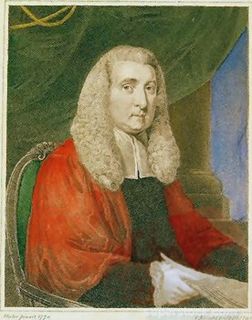
Daines Barrington, FRS, FSA was an English lawyer, antiquary and naturalist. He was one of the correspondents to whom Gilbert White wrote extensively on natural history topics. Barrington served as a Vice President of the Royal Society and wrote on a range of topics related to the natural sciences including early ideas and scientific experimentation on the learning of songs by young birds. He designed a standard format for the collection of information about weather, the flowering of plants, the singing of birds and other annual changes that was also used by Gilbert White. He also wrote on child geniuses including Mozart, who at the age of nine had visited England.
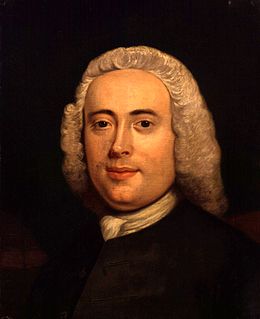
John Canton FRS was a British physicist. He was born in Middle Street Stroud, Gloucestershire, to a weaver, John Canton and Esther. As a schoolboy, he became the first person to determine the latitude of Stroud, whilst making a sundial. The sundial caught the attention of many, including Dr Henry Miles, a Stroud-born Fellow of the Royal Society. Miles encouraged Canton to leave Gloucestershire to become a trainee teacher for Samuel Watkins, the headmaster of a Nonconformist school in Spital Square, London, with whom he ultimately entered into partnership.
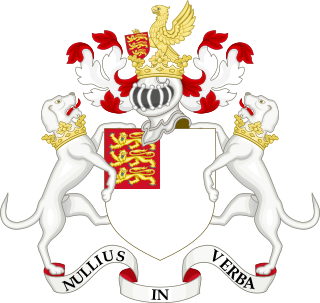
The Royal Society, formally The Royal Society of London for Improving Natural Knowledge, is a learned society and the United Kingdom's national academy of sciences. The society fulfils a number of roles: promoting science and its benefits, recognising excellence in science, supporting outstanding science, providing scientific advice for policy, education and public engagement and fostering international and global co-operation. Founded on 28 November 1660, it was granted a royal charter by King Charles II as The Royal Society.

Jesse Ramsden FRS FRSE was a British mathematician, astronomical and scientific instrument maker. His reputation was built on the engraving and design of dividing engines which allowed high accuracy measurements of angles and lengths in instruments. He produced instruments for astronomy that were especially well known for maritime use where they were needed for the measurement of latitudes and for his surveying instruments which were widely used for cartography and land survey both across the British Empire and outside. An achromatic eyepiece that he invented for telescopes and microscopes continues to be known as the Ramsden eyepiece.
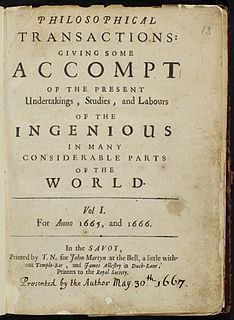
Philosophical Transactions of the Royal Society is a scientific journal published by the Royal Society. In its earliest days, it was a private venture of the Royal Society's secretary. It was established in 1665, making it the first journal in the world exclusively devoted to science, and therefore also the world's longest-running scientific journal. It became an official society publication in 1752. The use of the word philosophical in the title refers to natural philosophy, which was the equivalent of what would now be generally called science.

Thomas Beddoes was an English physician and scientific writer. He was born in Shifnal, Shropshire and died in Bristol fifteen years after opening his medical practice there. He was a reforming practitioner and teacher of medicine, and an associate of leading scientific figures. He worked to treat tuberculosis.

George Mackenzie, 1st Earl of Cromartie FRS (1630–1714), known as Sir George Mackenzie, 2nd Baronet from 1654 to 1685 and as The Viscount of Tarbat from 1685 to 1703, was a Scottish statesman.
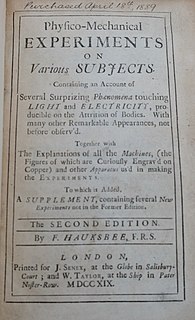
Francis Hauksbee the Elder FRS (1660–1713), also known as Francis Hawksbee, was an 18th-century English scientist best known for his work on electricity and electrostatic repulsion.
Christopher Middleton was a British navigator with the Hudson's Bay Company and Royal Navy officer. He was elected a Fellow of the Royal Society on 7 April 1737.

Sir Charles Brian Blagden FRS was an English physician and chemist. He served as a medical officer in the Army (1776–1780) and later held the position of Secretary of the Royal Society (1784–1797). Blagden won the Copley Medal in 1788 and was knighted in 1792.

Georg Joseph Kamel was a Jesuit missionary, pharmacist and naturalist known for producing the first comprehensive accounts of Philippine flora and fauna and for introducing Philippine nature to the European learned world. A number of Kamel's treatises were published in the Philosophical Transactions, while his descriptions of Philippine flora appeared as an appendix to the third volume of John Ray's Historia Plantarum.
Events from the year 1686 in England.
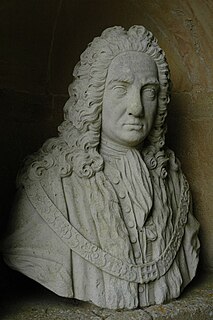
Sir John Barnard was a British Whig politician and Lord Mayor of London.
Samuel Dunn was a British mathematician, teacher, cartographer and amateur astronomer.
Robert Bellamy Clifton FRS was a British scientist.

Sir John Ellys or Ellis (1634?–1716) was an English academic, Master of Gonville and Caius College, Cambridge from 1703.
Edward Pigott (1753–1825) was an English astronomer notable for being one of the founders of the study of variable stars.














